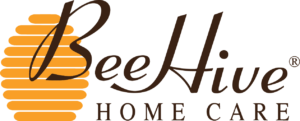It’s important for all of us to keep moving, like the old saying goes: “Move it or lose it!” So what is the best exercise for the elderly? Increasingly, research shows how regular exercise and physical activity is important for senior adults, helping protect against heart disease, strokes, diabetes; improve mental health and quality of life; and delay the onset of possible dementia. A Harvard Medical School study found that regular exercise reduced the likelihood of falls by 23%.
It’s important to get all four types of exercise: endurance, balance, strength and flexibility. Each offers different benefits. Talk with your doctor about what level of physical activity is right for you.
Start here and make a plan to work on the four components:
- Endurance or aerobic activities increase your heart rate and respiration rate, helping your heart, lungs, and circulatory system. These are activities such as brisk walking, yard work, dancing, biking (even stationary bikes), swimming and other activities that make your breathe harder than normal.
- Strength exercises work on muscular strength to help keep you independent and strong. Strong leg and hip muscles allow you to rise from a chair, climb stairs, and have good balance. If you’re not accustomed to exercising, talk with your doctor or trainer at a gym about what’s right for you. Resistance bands, the stretchy elastic bands, may be a good place to start. Carrying groceries or lifting appropriate weights help keep muscles strong. If someone is quite frail or not used to exercise, lifting a can of food in an arm curl for a repetition of 10 to 15 times could keep arm strength toned.
- Balance exercises help prevent falls, especially when combined with strength-building exercises for the lower body. Standing from a seated position can be a balance exercise, as well as heel-to-toe walking or standing on one foot. Have a person stand with you or use a heavy chair or the wall to help balance if needed. And always, always listen to your body; if you feel unsteady, don’t do exercises without medical supervision.
- Flexibility exercises are stretches that help muscles allow more movement, such as being able to bend over to tie your shoes. Neck extension stretches, thoracic extension (imagine expanding your chest and your arm movement during an exaggerated yawn), lower back stretches, hamstring stretches and many others can be performed while seated.
Maintaining strength, endurance, balance and flexibility help everyone as we age. Being independent is one of the key points for most seniors; the desire to stay in their home and care for themselves is a driving factor. Our mission and that of our sister company, FootPrints Home Care, is part of that decision for many families in New Mexico, allowing the parent or family member to age in place at home.
As aging continues, assisted living may be the next step in quality senior care and that’s where BeeHive Assisted Living comes in. With home-like residences across New Mexico you’ll find small-group residential care in a beautiful home with 24/7 staff close by.
If BeeHive Home Care of New Mexico can be of help to you or your family, please give us a call.


Pingback: Unveiling the Link Between Common Viruses and Alzheimer's - BeeHive Home Care
Pingback: Unlocking the Incredible Benefits of Movement - BeeHive Home Care